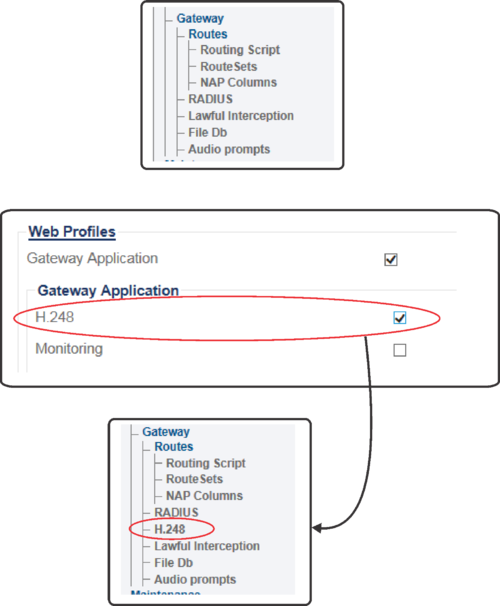Toolpack:Tsbc Web Portal Profile A
m |
|||
| Line 1: | Line 1: | ||
| − | |||
{{DISPLAYTITLE:Configuring a Web Portal Profile}} | {{DISPLAYTITLE:Configuring a Web Portal Profile}} | ||
| + | {| class="wikitable" | ||
| + | |- | ||
| + | |rowspan="3"|This article applies to: | ||
| + | |'''Product''' | ||
| + | |'''Version''' | ||
| + | |- | ||
| + | |SBC | ||
| + | |3.0, 3.1 | ||
| + | |} | ||
Web profiles enables regions of the Web Portal to be hidden from view. Changes to the web profile applies to all users of the web portal. | Web profiles enables regions of the Web Portal to be hidden from view. Changes to the web profile applies to all users of the web portal. | ||
Revision as of 14:53, 10 December 2020
| This article applies to: | Product | Version |
| SBC | 3.0, 3.1 |
Web profiles enables regions of the Web Portal to be hidden from view. Changes to the web profile applies to all users of the web portal.
A web portal profile is applied at the system configuration level. If for example, the basic-sip configuration does not require ISDN signalling, web profiles can remove ISDN as an accessible option from the web portal navigation panel.
The following procedure illustrates this example.
To configure a web profile:
1- Click Configurations in the navigation panel
2- Select the desired configuration from the Active configuration list.
3- Click Web Profiles to modify the web portal profile..
4- Uncheck/clear any web portal options that you do not wish to see.
5- Click Save.
The web portal option is immediately removed from the navigation panel.
Example: H.248 is added to the naviagation panel




